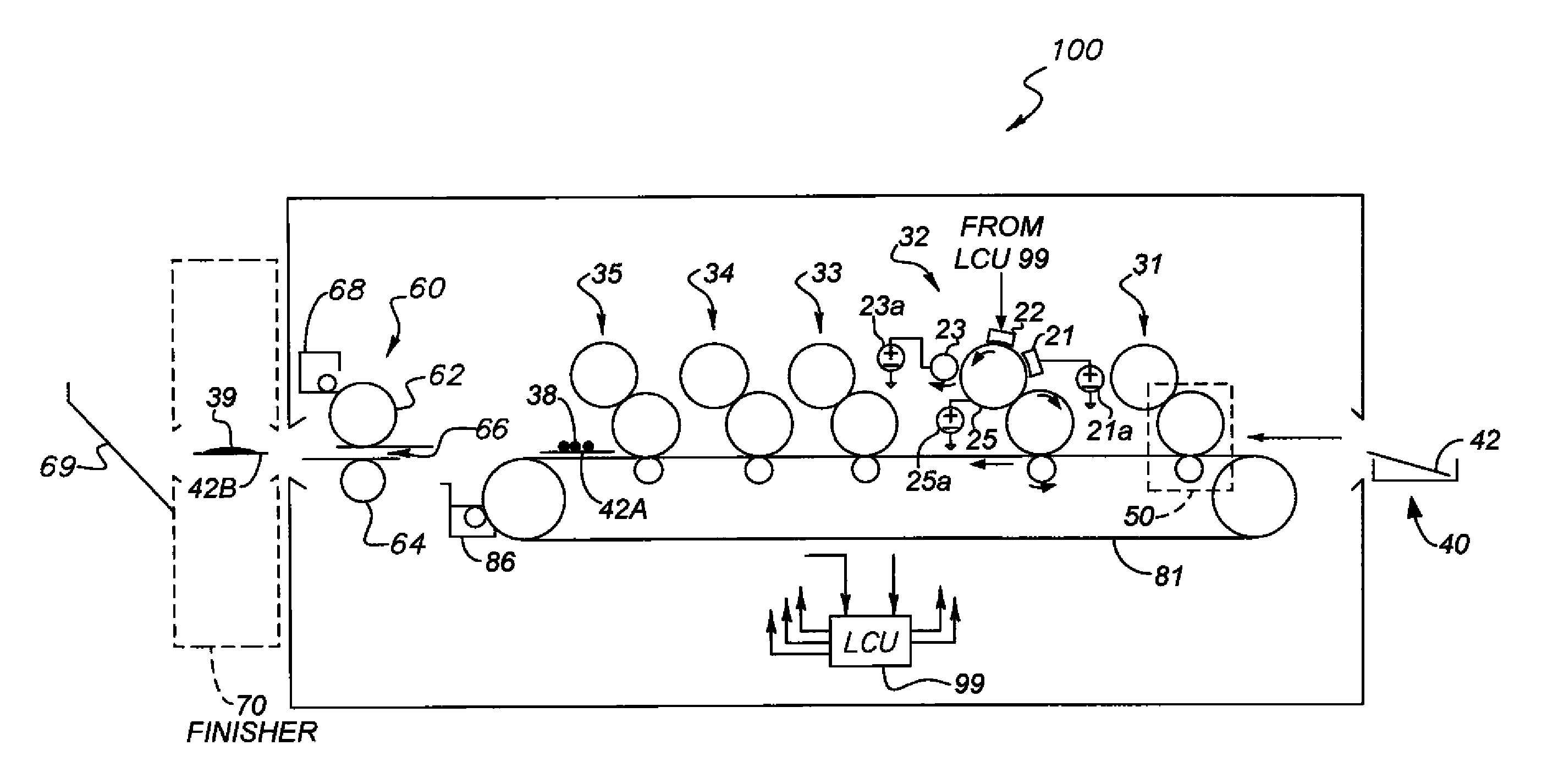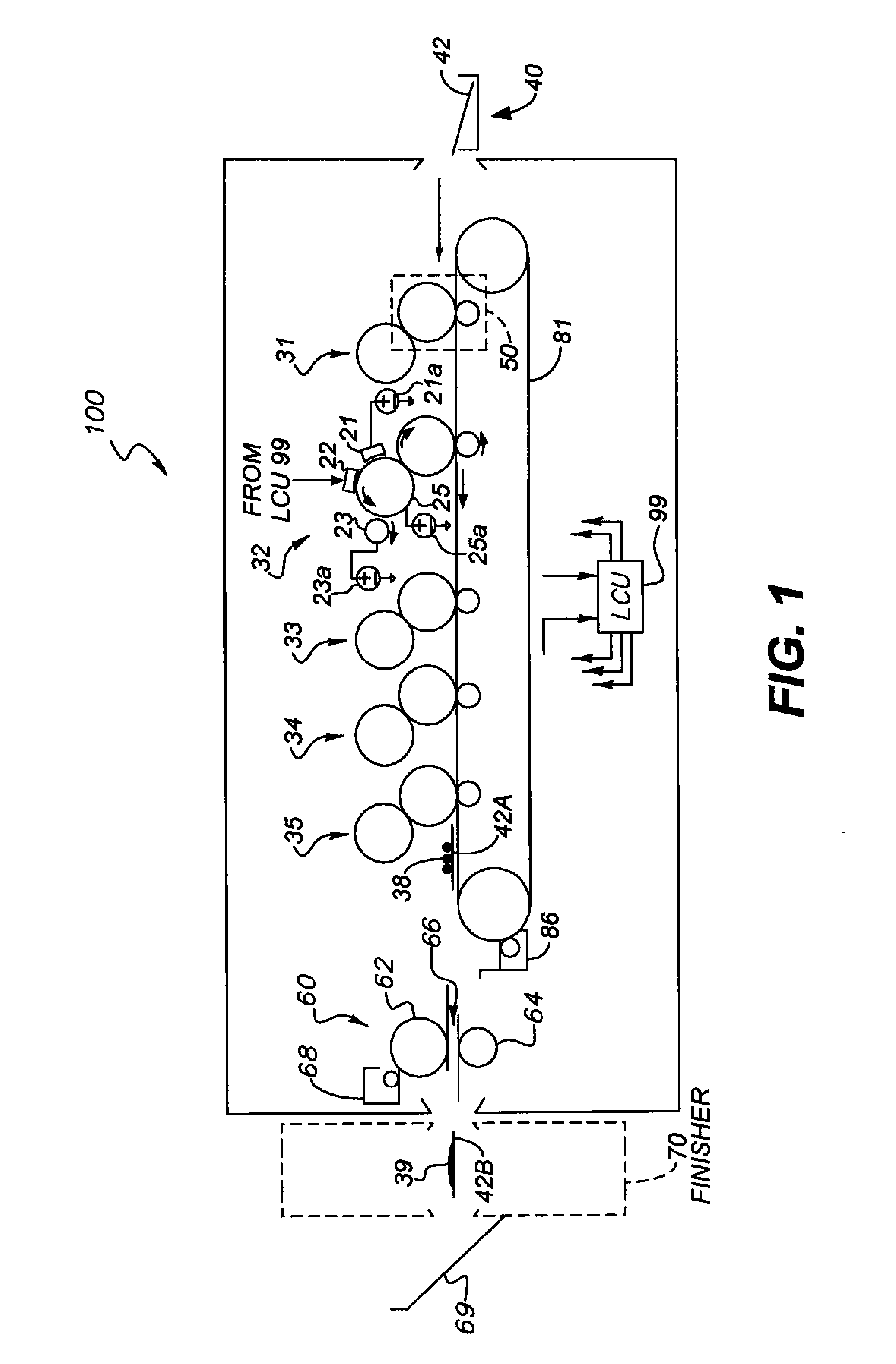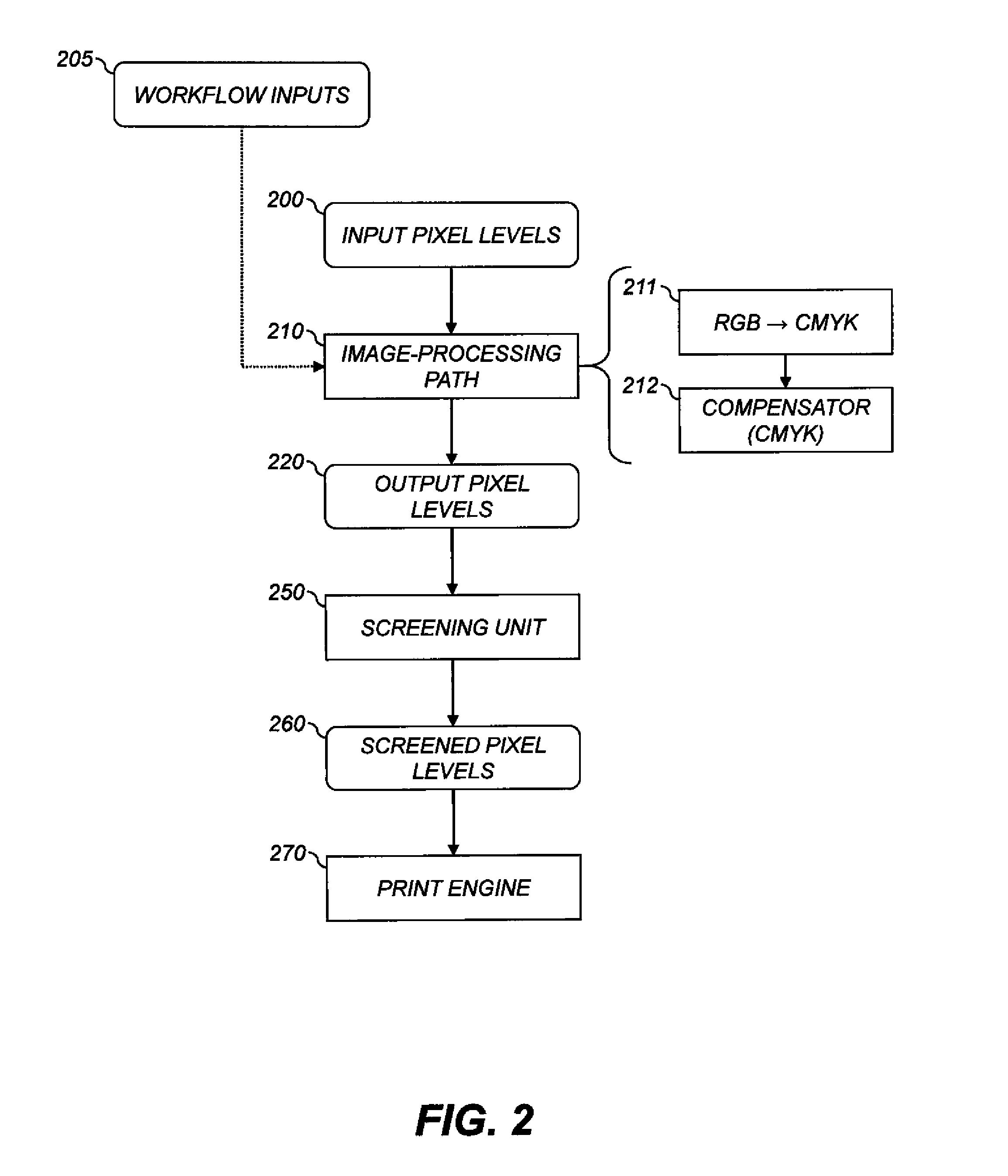Scanning patches to provide printer calibration data
a technology of printer calibration and scanning patches, applied in the field of printing, can solve the problems of not being able to assist the operator in performing hand scans with a spectroradiometer or other handheld scanner, and the scheme is not optimized for use with handheld scanners, so as to improve printer throughput, reduce the time required to calibrate printers, and improve the effect of flexibility
- Summary
- Abstract
- Description
- Claims
- Application Information
AI Technical Summary
Benefits of technology
Problems solved by technology
Method used
Image
Examples
first embodiment
[0083]In the first embodiment shown (solid arrows), the determining step (step 330) begins with step 410. In step 410, one or more of the scanned patches whose scanned patch data 499 is above a selected threshold are selected. For example, patches with densities (D) above the threshold (i.e., darker than the threshold), luminances (Y) or lightnesses (L*) above the threshold (i.e., lighter than the threshold), or saturations (C*) above the threshold (i.e., farther from neutral than the threshold) can be selected. The units of measurement of the scanned patch data, and the thresholds, can be selected according to the measurement devices available and the requirements of the system. This step uses patches with values above a threshold since they have higher signal-to-noise ratios than patches with values below the threshold, and are therefore more reliable for determining which sets have been scanned than the lower signal-to-noise patches. In one embodiment, step 410 is followed by ste...
second embodiment
[0092]In the second embodiment shown in FIG. 4 (dashed arrows), the determining step (step 330) begins with step 450. Step 450 selects respective signatures for the first and second patch sets on the target, as discussed below. Step 455 receives scanned patch data 499 and produces a signature of the scanned patch data. Steps 450 and 455 can be performed in either order. Step 460 compares the produced signature for the scanned patch data to the selected signatures for the patch sets to determine which patch sets have been scanned.
[0093]Each patch set has a signature. As used herein, the term “signature” means a collection of data uniquely identifying the patch set. That is, the first and second patch sets have different signatures. In various embodiments, the signature of a set is a list or bitmask of which patches in that set have a density (or color, saturation, lightness, or other quantities, as described above) greater than (or equal to) a selected threshold, or less than (or equ...
PUM
 Login to View More
Login to View More Abstract
Description
Claims
Application Information
 Login to View More
Login to View More - R&D
- Intellectual Property
- Life Sciences
- Materials
- Tech Scout
- Unparalleled Data Quality
- Higher Quality Content
- 60% Fewer Hallucinations
Browse by: Latest US Patents, China's latest patents, Technical Efficacy Thesaurus, Application Domain, Technology Topic, Popular Technical Reports.
© 2025 PatSnap. All rights reserved.Legal|Privacy policy|Modern Slavery Act Transparency Statement|Sitemap|About US| Contact US: help@patsnap.com



